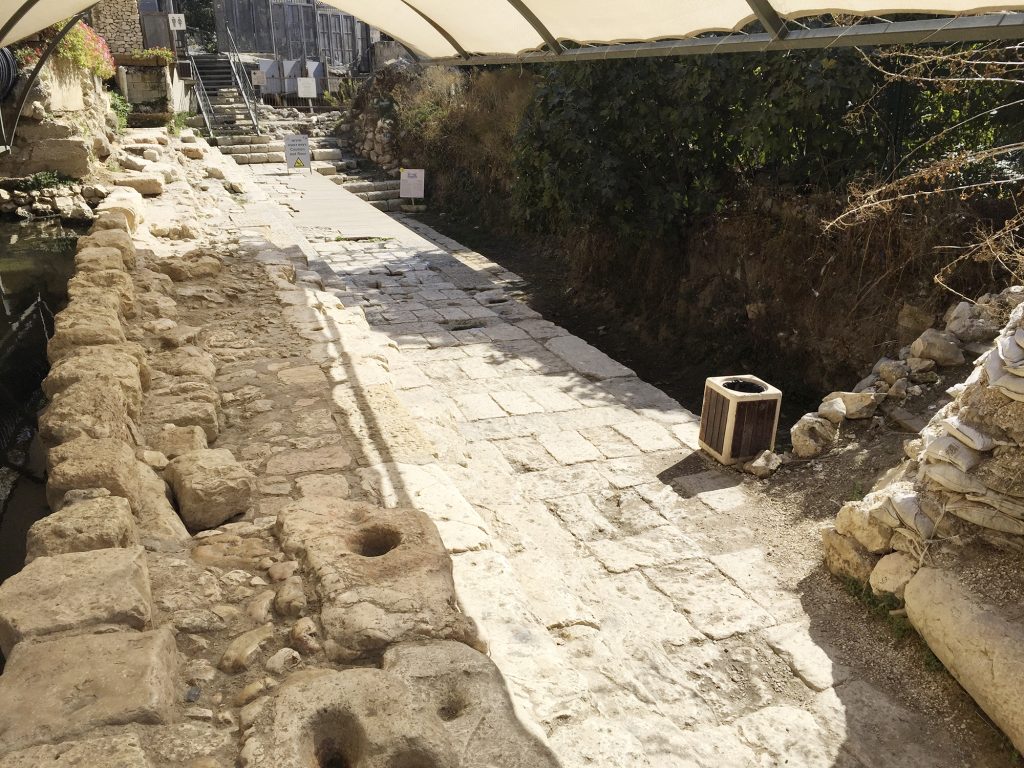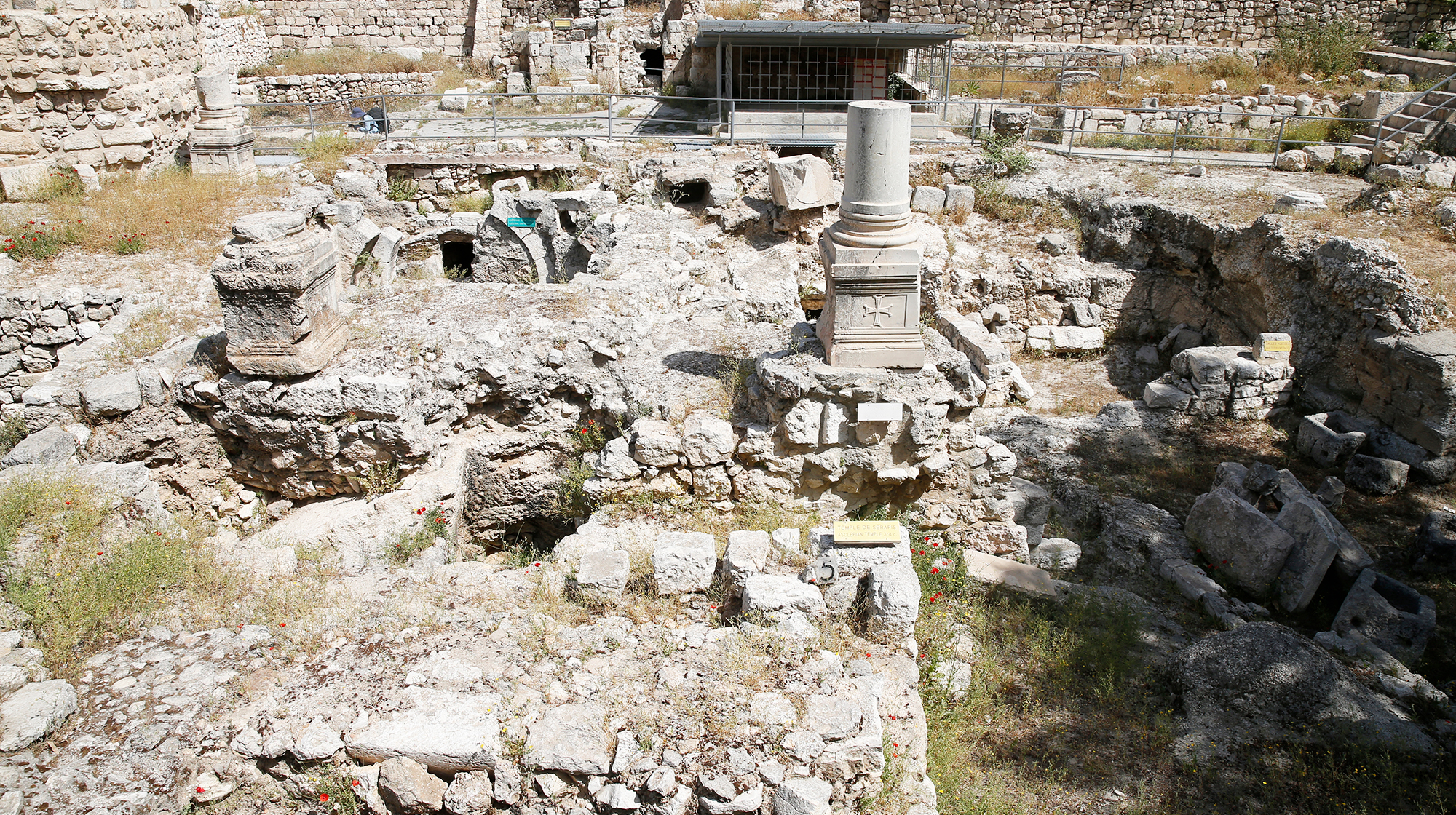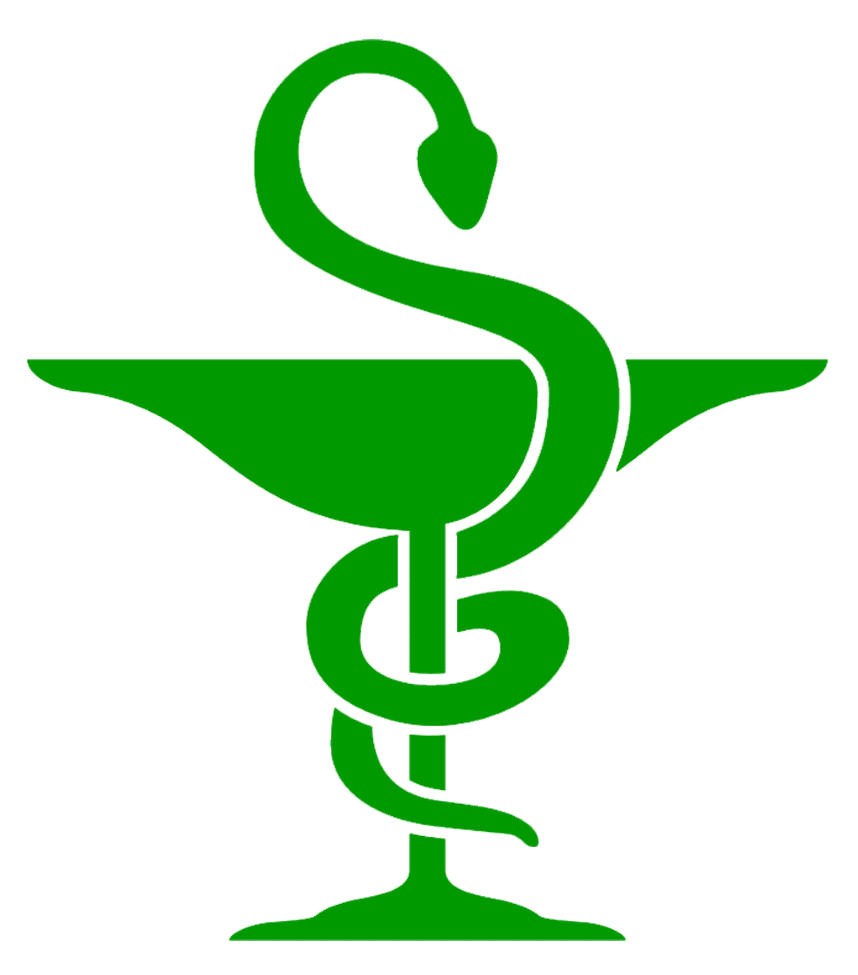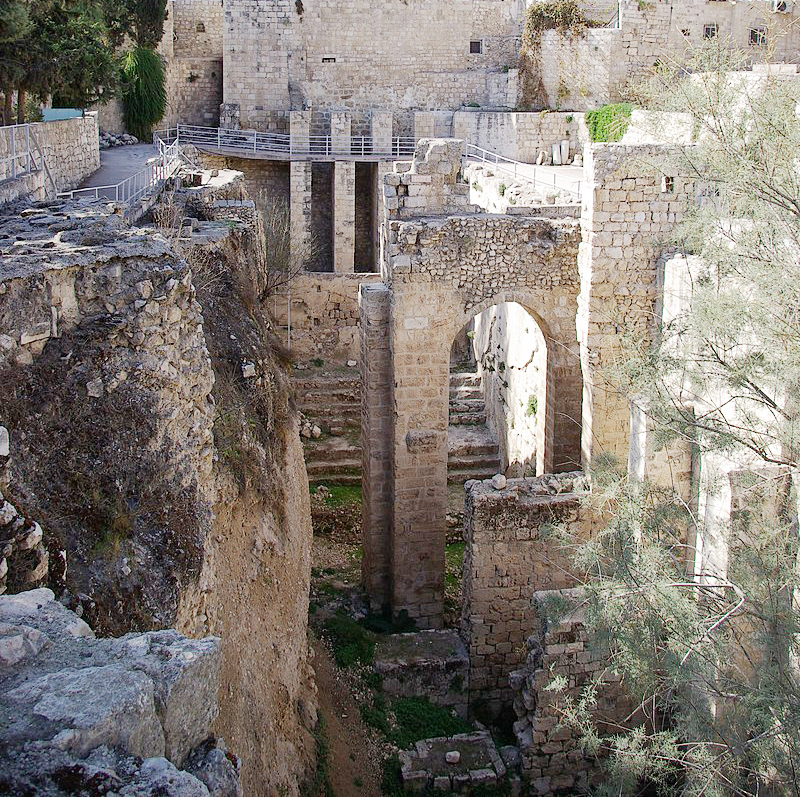
Bible, History, Archaeology
Bible,
History,
Archaeology
Bethesda Pool:
Jewish or pagan?
Introduction and reading
1 After this, there was a feast of the Jews, and Jesus went up to Jerusalem. 2 Now, in Jerusalem, near the Sheep Gate, there is a pool called Bethesda in Hebrew, which has five columns (or porticoes). 3 Beneath these columns lay a large number of sick, blind, lame and paralyzed people, waiting for the water to move; 4 for an angel went down from time to time into the pool and stirred the water; and he who went down first after the water had been stirred was healed, whatever his disease. (John 5:1-4).
Image opposite: two theologians studying and meditating on the Bible. Juicy SEPTEMBER 2150495825.
Two basins mentioned in John's Gospel have been clearly identified to date:
1- The Bethesda basin (or pool). Following restoration work on the Church of St. Anne in Jerusalem in 1888, two large pools with five porticoes and numerous fragments from Roman times, one of which showed « an angel stirring the water »(John 5:2). The pool of Bethesda mentioned in chapter five turned out to have five columns (as described in the Gospel), but it was not structured like a pentagon. There were four columns separated in the middle by another, thus forming the five columns.
2 - The Siloé basin (or pool) designated various reservoirs located south of the Ophel hill in the lower part of the city of Jerusalem at the time of the kingdom of Judah (John 9:7).
Image opposite: a general view of the ruins of the Pool of Siloam during excavations in the City of David in 2004. © Markbarnes.
In the 8th-7th century B.C., faced with the threat of siege from the powerful Assyrian Empire, Hezekiah, King of Judah, decided to ensure the city's water supply. This water, drawn from the Gihon spring, was transported inside the city walls through an underground gallery - the famous «tunnel of Hezekiah» - and then stored in a reservoir specially dug for the occasion (2 Kings 20, 20).
Renovated a few centuries later, the facility also served as a pool for Jewish ritual bathing (mikveh) on a pilgrimage to the Temple. This is confirmed by the story of one of Jesus' best-known miracles, told in chapter 9 of John's Gospel (John 9:1-41). As he passed through the Sheep Gate, Christ saw a man blind from birth. Mixing his saliva with dust, he applies this mud to the unfortunate man's eyes, before commanding him: «Go wash at the pool of Siloam - which means «sent». So the blind man went, washed and returned seeing clearly.», writes the evangelist simply (John 9:7).
The ruins of Bethesda Basin today. The Israel Antiquities Authority has announced that it will soon begin excavations at the Bethesda Basin. © godongphoto 2108488121.
The pool of Bethesda = Asclepiion
There's every reason to believe that the Pool of Bethesda (located just outside the Old City, close to the Temple of Jerusalem) was part of an Asclepiion, a healing center dedicated to the Greco-Roman god of well-being and health. Devotion to Asclepius was renowned throughout the regions dominated by the Roman Empire. At the time, there were over 400 Asclepiions across the empire, functioning as healing centers and dispensers of the divinity's grace and mercy to those in need.
Image opposite: a stick or cup surrounded by a snake, which today has become a symbol of the presence of a pharmacy. Public domain.
The god's mythical daughters included the goddesses Hygie and Panacea. We can hear in their Greek names our modern words for «hygiene» and «panacea» - key concepts associated today with medicine and health. Snakes were a key element in the health and healing cult of Asclepius. Even today, one of the key symbols of modern medicine is a cup or stick surrounded by a snake.
The 2nd-century Christian apologist Justin Martyr mentions a popular obsession with Asclepius among his contemporaries, saying: «... When the devil presents Asclepius as the restorer of the dead and the healer of all diseases, can I not say that in this respect, too, he has imitated the prophecies about Christ?» (Justin Martyr, Dialogue with Tryphon the Jew, 69). Similarly, in a statement attributed to the first- and early-second-century Jewish sage Rabbi Akiva, one of the most important masters of the third generation of Mishna doctors, we read: «Once, Akiva ben Yosseph was asked to explain why people with illnesses sometimes returned cured from a pilgrimage to an idol shrine, though he was surely powerless.» (Babylonian Talmud, Avodah Zarah 55a).
The Pool of Bethesda was probably part of the Hellenization of Jerusalem, along with several other important projects that included a Roman theater and bath. It was probably in reference to such a Hellenization of Jerusalem that the devout Jewish Qumranians (the Essenes of Qumran, chief opponents of the Pharisees), in their commentary on the prophet Nahum, wrote: «Jerusalem... had become a dwelling place for the wicked of the Gentiles...» (4QpNah).
In this situation, the Pool of Bethesda (« house of mercy »("Bethesda" in Hebrew) was probably not a Jewish site, but rather a facility affiliated to the Greek Asclepiion. It is very important to note that in the healing reported in chapter five of John's Gospel, Jesus does not command the one he healed to wash in the pool (of Bethesda), whereas in the story of the healing of the blind man in chapter nine, he gave a direct command to go and wash at the pool of Siloam. (John 9:6-7) So it seems that while the pool of Bethesda was a pagan place (an Asclepiion), the pool of Siloam was indeed linked to the Temple in Jerusalem.
But what about the part of the text (included in some manuscripts) that mentions an angel of the Lord stirring up the waters? (John 5:4).
4 [... for an angel descended from time to time into the pool, and stirred the water; and he who descended first after the water had been stirred was healed, whatever his disease...]
It would appear that a Christian copyist, unfamiliar with the cult of Asclepius and the Pool of Bethesda's affiliation with it, added the explanation of a «angel of the Lord» stirring the waters in an attempt to clarify things for his readers.
All early manuscripts omit this verse 4. In some current versions of our Bibles, it is clearly mentioned, in a footnote, that this verse does not appear in the old and early manuscripts of the New Testament.
Image opposite: a view of the Bethesda pool ruins today. © Berthold Werner.
While trying to help his readers, the scribe sent all subsequent generations of readers in the wrong interpretative direction, thus missing the point of the story. The stirring of the water was part of a ceremony when the priests of the temple of Asclepius opened the connecting pipes between the upper and lower parts of the pool. Because one set of pipes was higher than the other, it caused the water to shake. «agitation» water into the pool. Water from the upper reservoir flowed into the lower part of the pool, but the 4th-5th century Christian scribe seems to have been unaware of this.
It's an excellent illustration of the importance of recovering a first-century Jewish perspective on the Holy Scriptures.





